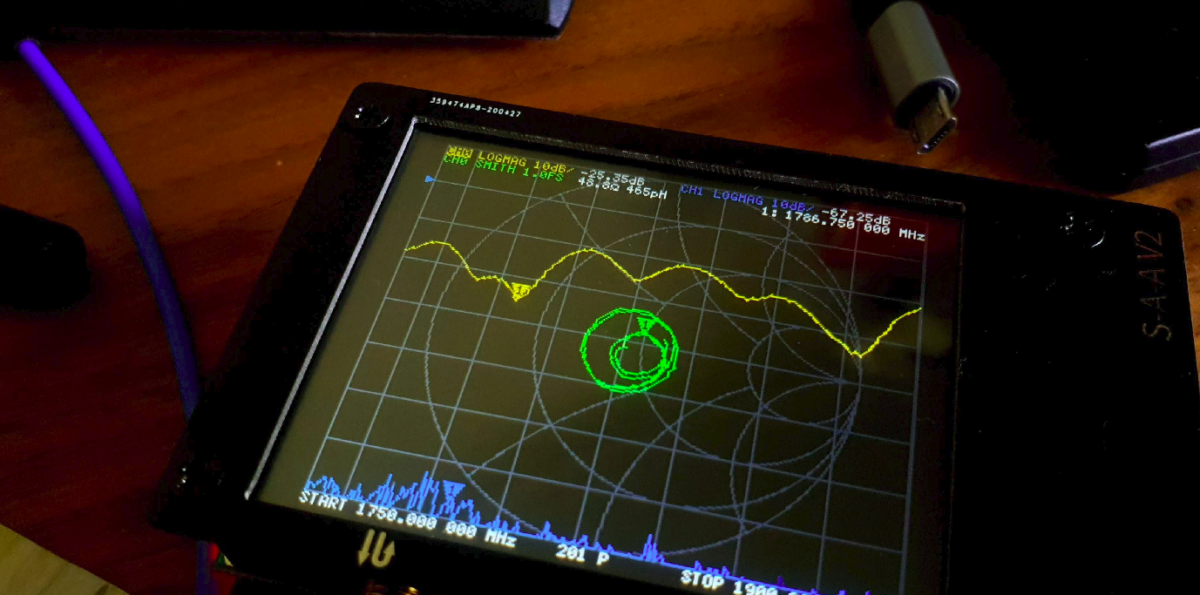I recently got my hands on a NanoVNAv2 and thought I’d take a look at the antennas I’d purchased for my GSM SDR experimentation,

I ordered two of these antennas for the princely sum of $3 and hooked them onto the NanoVNA to analyse the antennas – the poor man’s Anritsu SiteMaster!
The buttons on the NanoVNA are a bit tough to use but there’s great software out there for driving the NanoVNA from your computer (NanoVNA-saver), which is what used in the end,
I was operating the GSM network using ARFCN 871 with the SDR which translates to 1782 MHz for Uplink and 1877 MHz for Downlink, so I plugged in the values into the VNA to take a look at how it performs in those ranges,

Performance is actually pretty on point,
On the Uplink frequency we’ve got a VSWR of 1.15 which is about as good as it gets,
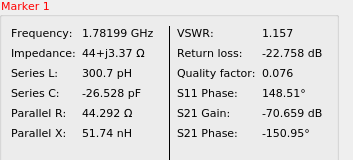
And in the downlink we’ve got a VSWR of 1.221, still pretty good.
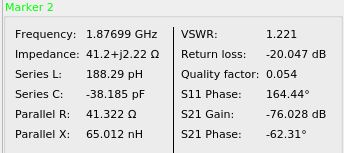
Performance on the remainder of the 1800MHz band is pretty decent, with clear drops in VSWR where the Uplink and Downlink channels lie.
I measured the full band for Uplink on the 1800Mhz band (1710Mhz – 1785Mhz):
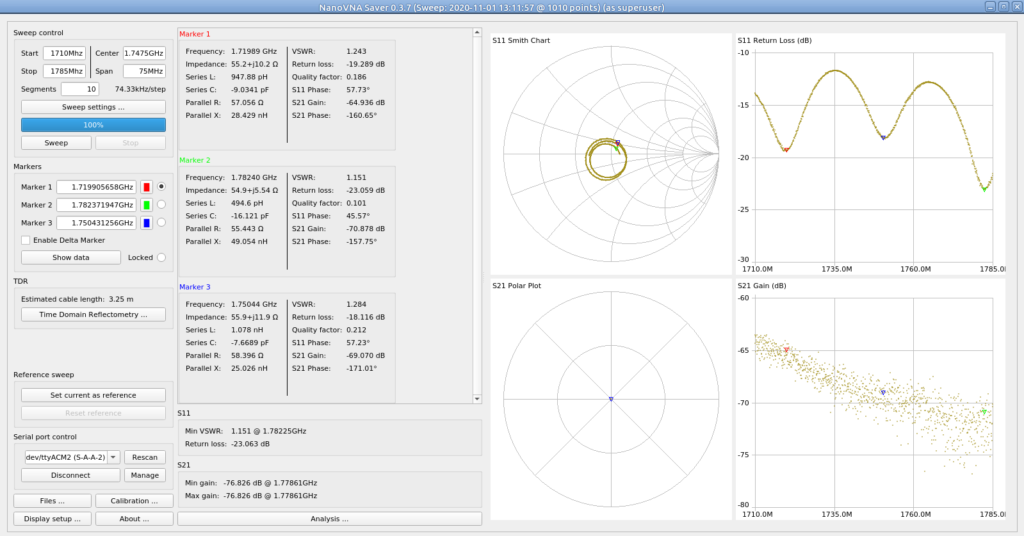
Which shows not all channels are created equal, if you were looking for real performance on these antennas and not just playing, you’d probably want to put your uplink channel on one of the frequencies shown by the marker,
And the full band for Downlink on the 1800Mhz band (1805Mhz – 1890Mhz):
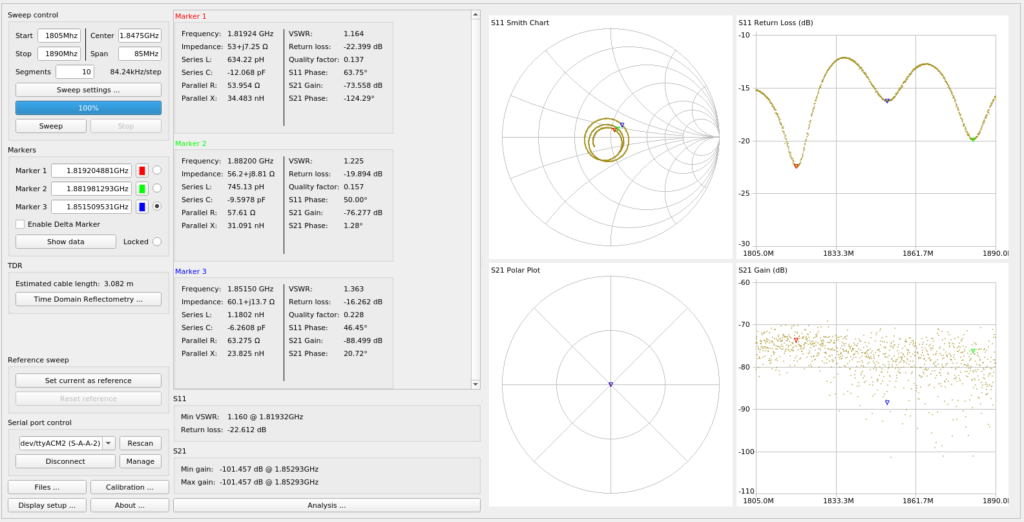
Again, varied performance, but the peaks and troughs line up on the uplink and downlink, so a lower ARFCN in the 1800Mhz band would put you about on the red marker for both,
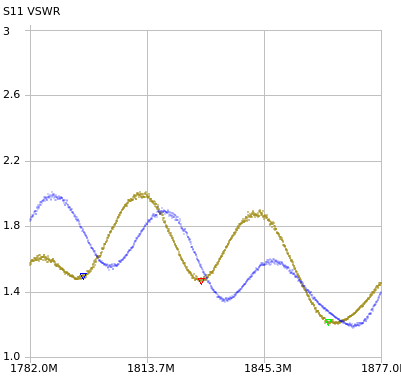
In reality I could be using a bent coat hanger for an antenna, the signals shouldn’t be able to leave the room, but it’s a good excuse to use the toys!
